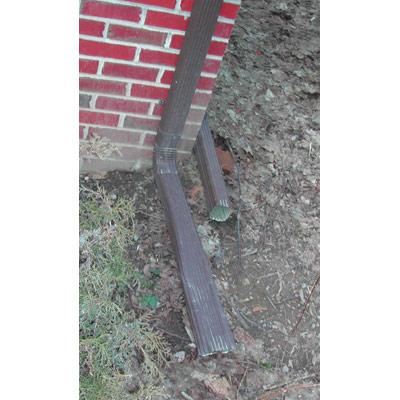Mold Course Chapter 9:
Prevention
Lesson 1 - Mold Prevention
The key to mold prevention is moisture control. Water entry into buildings or building crawl spaces should be controlled. If water enters a building through a leaking roof or because of a flood or accident, it should be removed immediately and affected areas should be dried out.
Hidden Areas
Special attention should be given to areas that are hidden, but that might have gotten wet. Areas frequently overlooked and not dried carefully include:
- Behind walls
- Ceilings
- Crawl spaces
- Attics
In general, all wet areas should be completely dried within 48 hours to prevent mold from growing.

Routine Maintenance is Important
A number of items frequently involved in mold problems should be checked and maintained routinely.
Furnace Humidifiers
Furnace humidifiers must be cleaned regularly to prevent mold and bacterial growth. Ducts in which humidifiers are installed should also be checked to ensure water has not leaked into the furnace or filter areas. Stand-alone humidifiers should be cleaned very frequently to ensure that they are not moldy. Special attention should be paid to any filters in the humidifier because they can become moldy and the humidifier can spread spores throughout the area. Carpeted areas around the humidifiers should also be monitored for wetness. Humidifiers should be set to produce less than 60 percent relative humidity in the building. Relative humidity greater than 60 percent is likely to result in condensation in the building, which can lead to mold growth.
HVAC Systems
HVAC systems should be checked routinely because mold in a ventilation system may be spread throughout the building. Drain or condensate pans should also be checked routinely because they can become reservoirs for mold and bacteria if not installed and maintained properly. These pans are designed to remove water produced by cooling hot air from the ventilation system. If the pans do not drain, or are not cleaned frequently, they may allow water to enter the HVAC system and contaminate the ventilation ducts in the building. The pans themselves may also grow mold and allow mold spores to be spread throughout the building. Filters for the HVAC system also should be kept dry and changed frequently.
Toilet and Bathroom Areas
Toilet and bathroom areas should be carefully monitored for water and plumbing leaks. Signs of water damage should be investigated quickly, including:
- Rippling wall coverings
- Cracked drywall tape
- Peeling paint
- Other signs of water damage
These signs frequently indicate that water has leaked, and hidden mold growth and damage are likely. Water seepage into crawl spaces or basements should also be stopped quickly to ensure that mold will not grow, and measures such as the installation of sump pumps or a regrading of the area around the building should be considered to prevent future leaks. Any areas that smell moldy or musty should also be investigated to ensure that water has not entered and mold is not growing.
Buildings
Buildings should be located, landscaped, built and renovated with consideration for the climate. A building that is not suited to the climate can have moisture problems. Buildings inevitably will get wet, both inside and out, and they must be allowed to dry or mold will grow in them. Selection and location of building materials and furnishings can also be made with mold prevention in mind. In frequently damp or wet areas, more mold-resistant materials can be used; for example, some woods are more resistant to mold than particle board or pressed board.
Mold Prevention Tips
- MOISTURE CONTROL IS KEY
- Keep the building clean and dry. Dry wet or damp areas within 48 hours.
- Fix leaky plumbing and leaks in the building envelope as soon as possible.
- Watch for condensation and wet spots. Fix the sources of moisture problems as soon as possible.
- Prevent moisture due to condensation by increasing surface temperature or reducing the moisture level in air (humidity). To increase surface temperature, insulate or increase air circulation. To reduce the moisture level in air, repair leaks and increase ventilation (if outside air is cold and dry), or dehumidify (if outdoor air is warm and humid).
- Keep heating, ventilation and air conditioning (HVAC) drip pans clean, flowing properly and unobstructed.
- Vent moisture generating appliances, such as dryers, to the outside where possible.
- Maintain low indoor humidity, below 60 percent relative humidity (RH), ideally 30 percent to 50 percent, if possible.
- Perform regular building and HVAC inspections and maintenance as scheduled.
- Don't let foundations stay wet. Provide drainage and slope the ground away from the foundation.
- If you are not experienced with home/building repairs you may want to consult a professional when making repairs, or for assistance with mold-prevention-related changes to your home/building.
For large buildings: Use EPA's I-BEAM guidance to help manage indoor air quality. Routine maintenance and repairs reduce the likelihood of a mold problem in the building. See:
For schools: Use EPA's IAQ Tools for Schools guidance.

